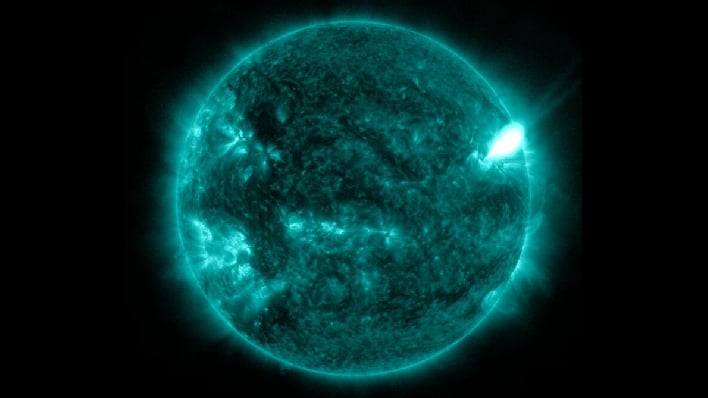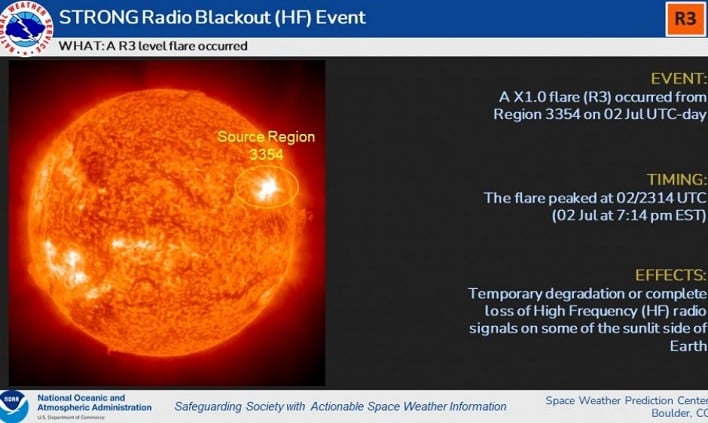NASA Captures The Sun's Fiery Wrath In Stunning Shot Of A Fearsome Solar Flare

NASA has been studying how the Sun creates solar activity and drives space weather with SDO since its launch in 2010. The observatory's measurements of the Sun have helped NASA to better understand events on Earth's bright star. Recently, SDO was able to capture an X1.0 solar flare, which was classified as an R3 (Strong) radio blackout event.
Solar flares are powerful outbursts of energy on the Sun's surface. These intense flares can have an impact on radio communications, electric power grids, and navigation signals, and could pose a risk to spacecraft and astronauts if strong enough.
The event that occurred on July 2, 2023, was an X-class, which denotes the most intense flares, while the number (1.0) indicates more information about the flare's strength, according to NASA. An X-class solar flare is so strong, that they even have the potential to give small doses of radiation to people flying in airplanes at the time it impacts Earth.
Some of the most powerful solar flares in recent history occurred in 1989 and 2001, both were rated at X20. However, in 2003, the National Oceanic and Atmosphere Administration (NOAA) classified a solar flare as an X28, making it the strongest ever recorded.
Our Sun has been more active lately due to the fact that we are approaching the solar maximum that will most likely occur in 2025. As we grow closer to the solar maximum, the period of greatest activity during the Sun's 11-year cycle, more powerful solar flares are expected to be hurled out from the Sun.


